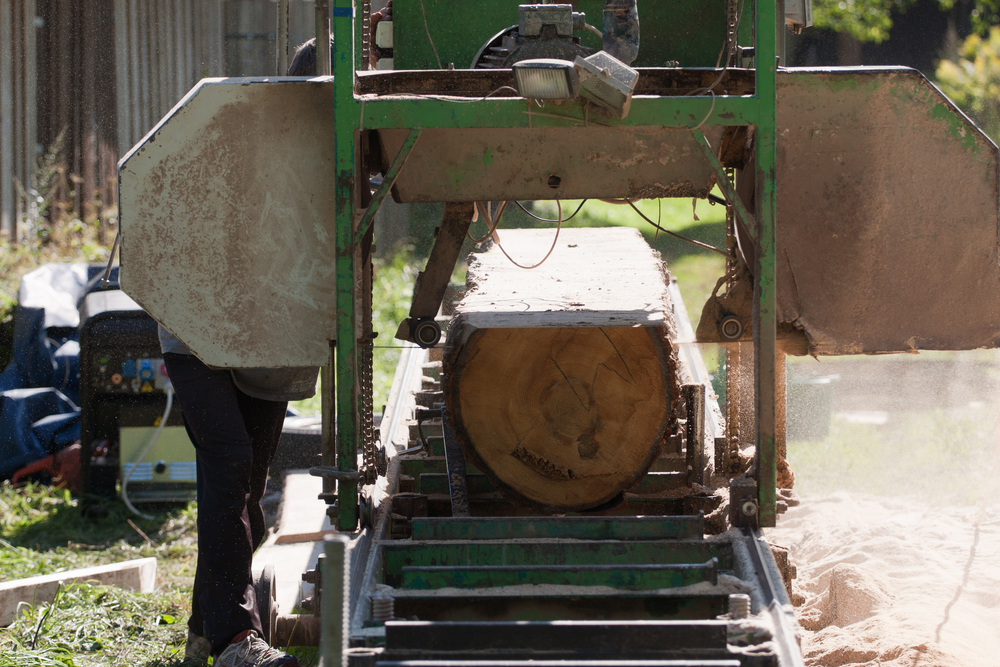A Brief Insight into a Portable Sawmill
A portable sawmill is a smaller mill that can be transported from one place to another. It can be set up without any difficulty on the site. It gained popularity post-1973. Commercialized portable sawmillS came in the year 1982. The first generation portable sawmills used circular blades. This was costly on account of the weight of the bearings and supporting blocks. From the year 1982, use of portable bandsaw mills came into use.
A thin blade replaced the circular blade, thereby bringing down the weight as well as the cost of portable sawmills. The size and weight of bearings and supports were reduced to a great extent.

You can transport a portable sawmill and install it at a site adjoining to the tree. The other uses of the portable sawmill are as follows:
– Speedy and accurate cuts
– Produce special timber products
– Serves as income by rendering service to customers as a mobile service
– Cuts and sells lumber at a local site
– Cuts lumber to straightaway produce a finished product
– Cuts special woods for furniture
– Produce frameworks for buildings
Types of portable sawmills
The common types of portable sawmills are as follows:
– Bandsaw mill
– Chainsaw mill
– Swingblade mill
Portable sawmills can either be manual or hydraulic, standard or wide, or monorail or twin rail.
Feeding of a portable sawmill can be push feed or crank feed. Complete hydraulic handling systems with electronic head controls are also available. The driving engine may be electric, gas, petrol, or diesel. Manual portable sawmill is the cheapest sawmill available on the market. Portable sawmills with hydraulic handling systems are a little costlier. The cost goes up if you choose a wide version or twin rail or electronics control. Cost is also dependent on the length and diameter of the log to and the production rate expected.
Things to consider when buying portable sawmills
Selection of a portable sawmill depends on the log capacity, i.e., log diameter and log length. Then comes the production capacity you are looking for expressed in bd ft/hr (board foot/hour). The largest width of cut should also be an important consideration. The higher the log capacity, the costlier is the price.
A study showed that half of the portable sawmills sold replaced the old, traditional sawmills. The followings points should be borne in mind when you are shopping for a portable sawmill:
– Purpose
– Cost
– Time-saving
– Opportunities for generating income
– Reputation of supplier
– Safety
Other specifications of a portable saw that should be taken into consideration before buying one are as follows:
– Power of engine
– Power source (electric/gas/petrol/diesel)
– Manual or hydraulic handling
– Standard or wide sawmill
– Monorail or twin rail
– The diameter of band wheels
– Blade thickness and guides for blades
Do ensure to check for the following as well:
– Whether heavy duty clamps are provided
– Whether blade height indicator provided
– Whether the trailer package is equipped with lamps
– Whether you need a log ramp? This is sometimes provided as an optional item by the seller
– Hand crank for the head with chain and sprocket
– Whether head control electronics are provided
– Whether the track is of heavy duty steel
– Whether there are blade guides
Based on the following factors, your production requirements may vary:
– Diameter and length of logs
– Hardness of logs
– Size of lumber sawed
– Power model used
– Accessories used
Manufacturers of portable sawmills
There are scores of manufacturers who sell reliable portable sawmills. Some of the popular suppliers are Wood-Mizer, Norwood Sawmills, Mobile Mfg Co, and Timberking.

